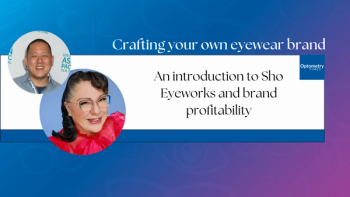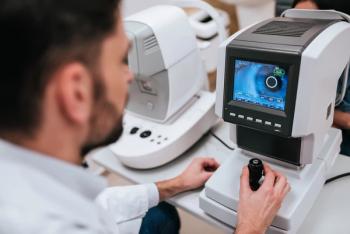
Primary care optometry: addressing the posterior segment
During the American Academy of Optometry's Academy 2014, experts elucidated with promising directions for retinal and other posterior eye problems.
Denver-During the
Mohammad Rafieetary, OD, associate, Charles Retina Institute, said that in comparison with glaucoma, "We don't get much education in
“And we fail a lot in diagnosing DR. We don't pay much attention to this disease. So we must do a better job. To a certain degree, we have to self-educate. And it's not just diabetic retinopathy-hypertensive retinopathy is overwhelmingly underdiagnosed,” says Dr. Rafieetary.
Megan A. Hunter, OD, of the Jesse Brown VA Medical Center in Chicago, said that rhegmatogenous retinal detachment (RRD) accounts for approximately 50 percent of all surgical cases treated in vitreoretinal surgery departments and practices, and surgery carries a very high anatomic success rate. The major approaches most commonly used include scleral buckling (SB), pneumatic retinopexy, and pars plana vitrectomy (PPV). However, none provides a perfect solution. SB, for example, offers a high single-surgery success rate and low risk of cataract formation versus vitrectomy.
“And because this is extraocular surgery, there's no risk of intraocular complications such as hemorrhage and infection,” says Dr. Hunter. The disadvantages include elongating the eye, thereby increasing myopia.
Upon drug therapies, Blair Lonsberry, MS, OD, director, Pacific Eye Clinic in Portland says that while 2011 revised Plaquenil (hydroxychloroquine, Sanofi) guidelines aren't exactly new, “they're very important. I can guarantee that everyone in the room is seeing patients on Plaquenil,” and they haven't necessarily seen the guidelines.
Under these guidelines, a normal dose is 200-400 mg daily. “Dosing used to be based on body size, but we found patients were being overdosed. The new recommendations indicate that body size can be considered," if it falls well outside normal parameters.
Additionally, he said, "Plaquenil loves to accumulate in pigmented tissue, which is why we worry about the retina and the development of bull's-eye maculopathy." Because the drug excretes very slowly, "Monitor patients for about a year after they stop the medication. There have been reports of continued changes two to five years" after discontinuing, says Dr. Lonsberry.
Another form of toxicity may present as a whorl keratopathy of the cornea, he said. "It's probably extremely rare. However, if you see a patient who has whorl keratopathy and they're not taking any medications, we must eliminate Fabry’s disease as a possibility. And you're going to diagnose Fabry’s disease earlier than any other healthcare professional because the whorl keratopathy shows up very early in the disease process."
Perhaps the most important piece of the new guidelines says that patients' ultimate risk of toxicity is approximately one percent after five years' use. “What do you think patients have been told? ‘We need to screen you before you start taking the medication, and screen your every six to 12 months, and there's a chance you'll go blind.’ If I'm on a medication where I have to be screened for taking it, I'd be worried about that medication.”
Among other therapies, with says Dr. Hunter,
Newsletter
Want more insights like this? Subscribe to Optometry Times and get clinical pearls and practice tips delivered straight to your inbox.








































